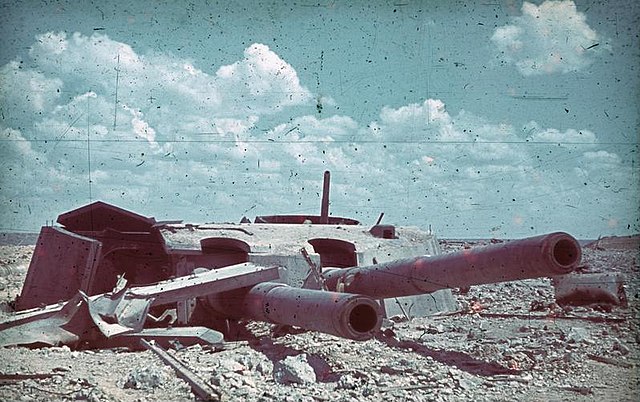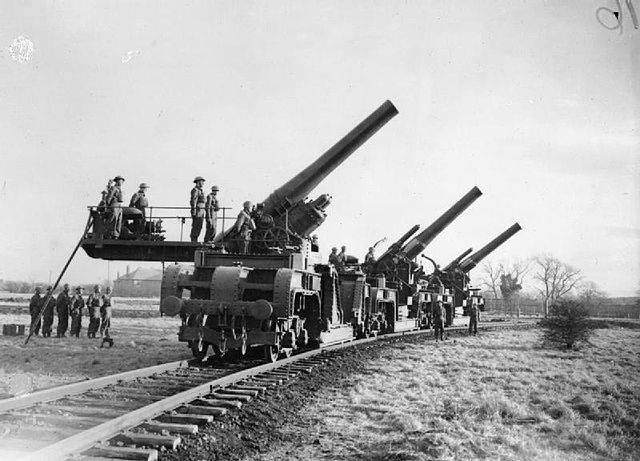Schwerer Gustav was a German 80-centimetre (31.5 in) railway gun. It was developed in the late 1930s by Krupp in Rügenwalde as siege artillery for the explicit purpose of destroying the main forts of the French Maginot Line, the strongest fortifications in existence at the time. The fully assembled gun weighed nearly 1,350 tonnes, and could fire shells weighing 7 t to a range of 47 km (29 mi).
Model of the Dora
An 800 mm Schwerer Gustav shell at the Imperial War Museum, London
A shell for the Dora gun (without the sharp ballistic cap) found after the war at the former German firing range near Rügenwalde (today Darłowo), on exhibition in the Polish Army museum in Warsaw
Maxim Gorky I, a fort knocked out of action by five 800 mm shells on 17 June 1942
A railway gun, also called a railroad gun, is a large artillery piece, often surplus naval artillery, mounted on, transported by, and fired from a specially designed railway wagon. Many countries have built railway guns, but the best-known are the large Krupp-built pieces used by Germany in World War I and World War II. Smaller guns were often part of an armoured train. Only able to be moved where there were good tracks, which could be destroyed by artillery bombardment or airstrike, railway guns were phased out after World War II.
French 370 mm railway howitzer of World War I
Non-traversing (top); car traversing mount (middle); top carriage traversing mount (bottom)
British 12-inch howitzers on top-carriage traversing mounts, traversed 90°, Catterick, December 1940
Cradle recoil (top); top carriage recoil (second); sliding recoil (third); rolling recoil (bottom)








